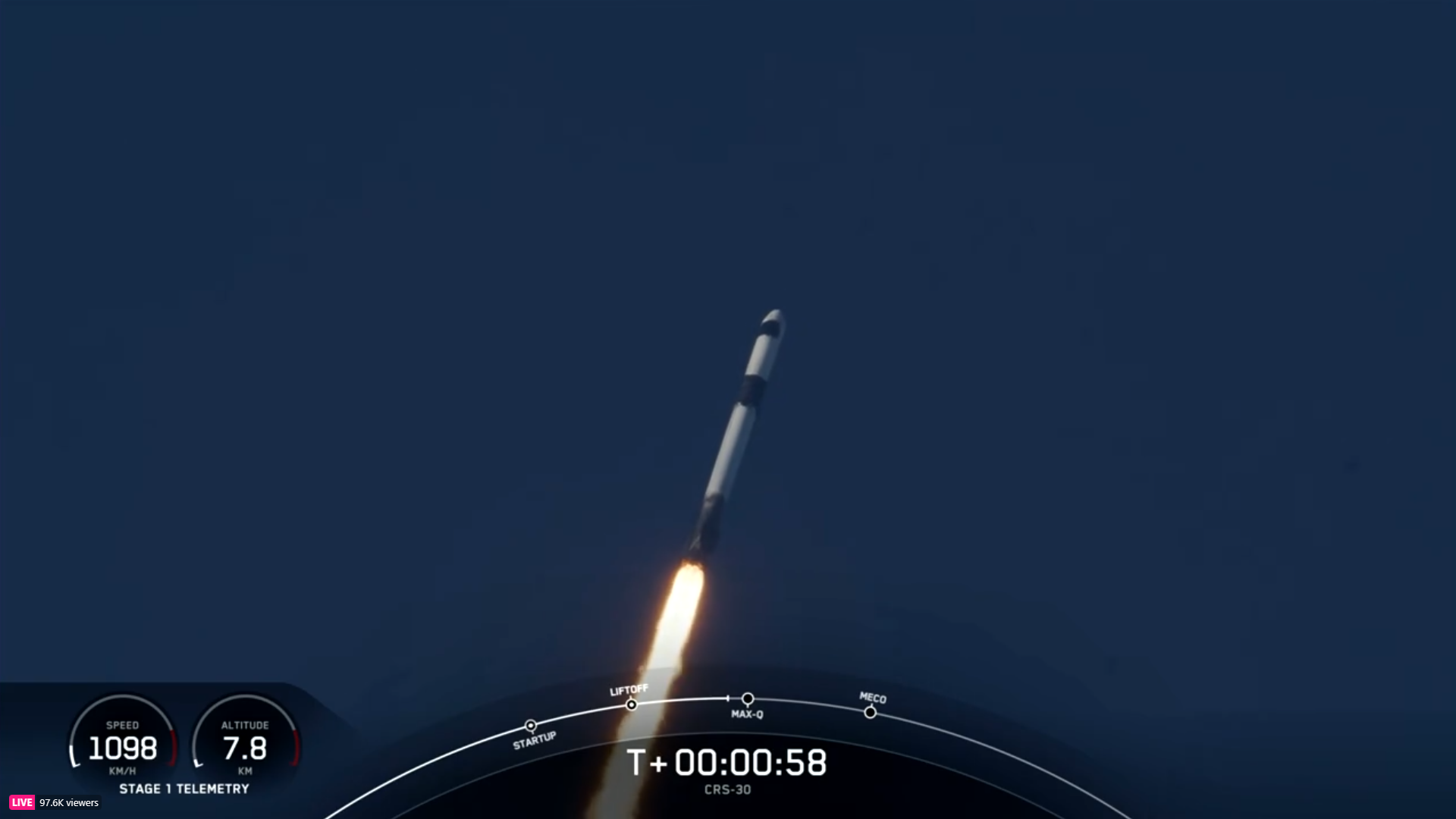
SpaceX has flown its first Cargo Dragon from storied Space Launch Complex (SLC)-40 at Cape Canaveral Space Force Station, Fla., in more than four years, following Thursday’s 4:55 p.m. EDT launch of CRS-30 atop a veteran Falcon 9 booster. Laden with more than 6,000 pounds (2,700 kilograms) of payloads, equipment and supplies for the incumbent Expedition 70 crew aboard the International Space Station (ISS), the launch comes only hours after Russia’s Soyuz MS-25 mission was scrubbed less than 20 seconds before its liftoff from the Baikonur Cosmodrome in Kazakhstan.
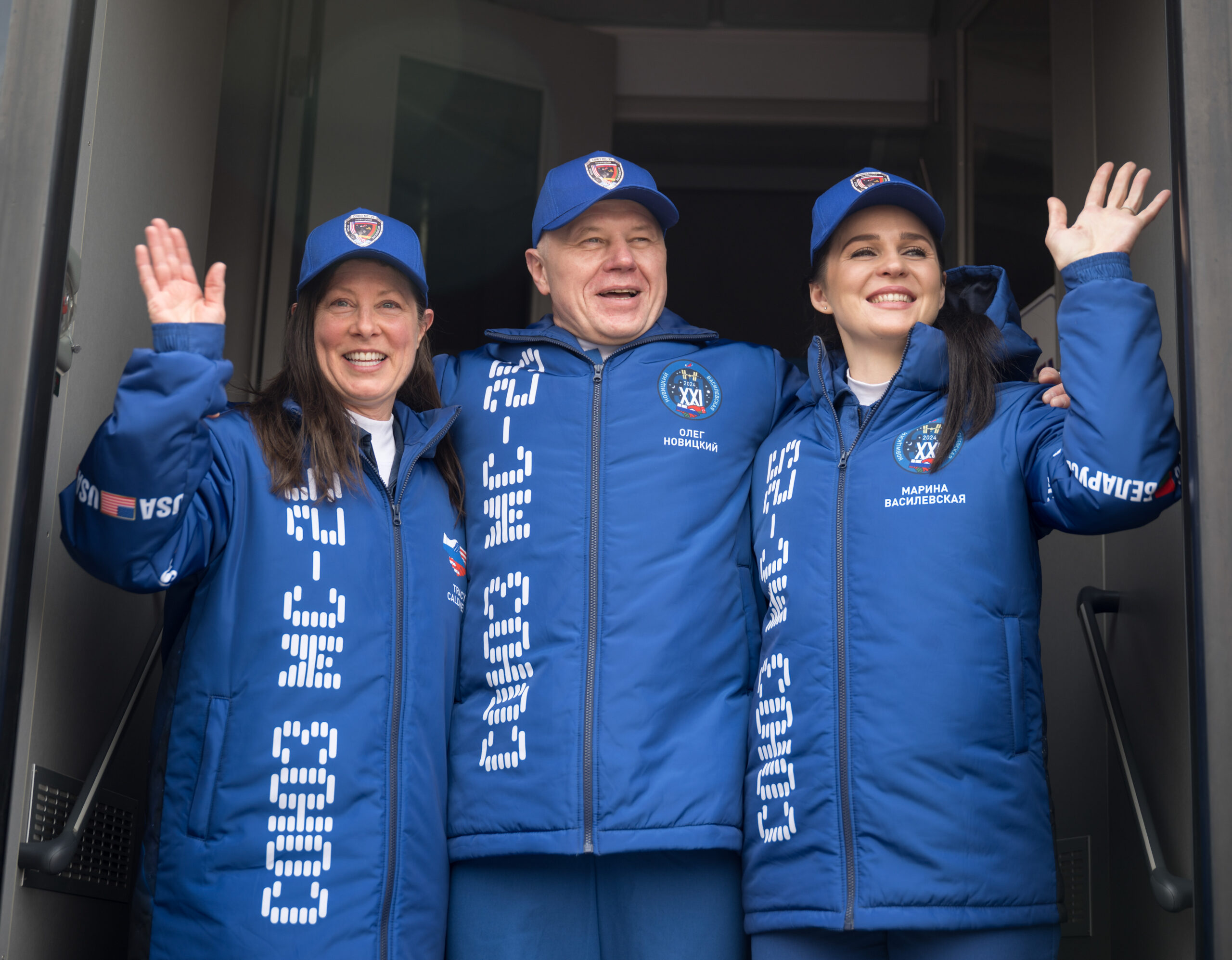
Thursday’s action began with Soyuz MS-25, which was to carry Russian cosmonaut Oleg Novitsky, U.S. astronaut Tracy Dyson and the first national space traveler from Belarus, Marina Vasilevskaya. Liftoff of the 162-foot-tall (49-meter) Soyuz-2.1 booster from Baikonur’s Site 31/6 was targeted for 6:21:18 p.m. local time (9:21:18 a.m. EDT), after which Novitsky, Dyson and Vasilevskaya would spend three hours and two Earth orbits in transit before docking at the Earth-facing (or “nadir”) port of the space station’s Prichal module at about 12:39 p.m. EDT.
Despite overcast skies and mild temperatures in the 40s Fahrenheit, the prime crew and their backups—Russian cosmonaut Ivan Vagner, U.S. astronaut Don Pettit and Anastasia Lenkova of Belarus—were awakened early Thursday and showered, dressed and ceremonially autographed their doors at Baikonur’s Cosmonaut Hotel. A solemn blessing by a Russian Orthodox priest was followed by Novitsky, Dyson and Vasilevskaya getting bussed out to Site 254 to don their Sokol (“Falcon”) launch and entry suits.
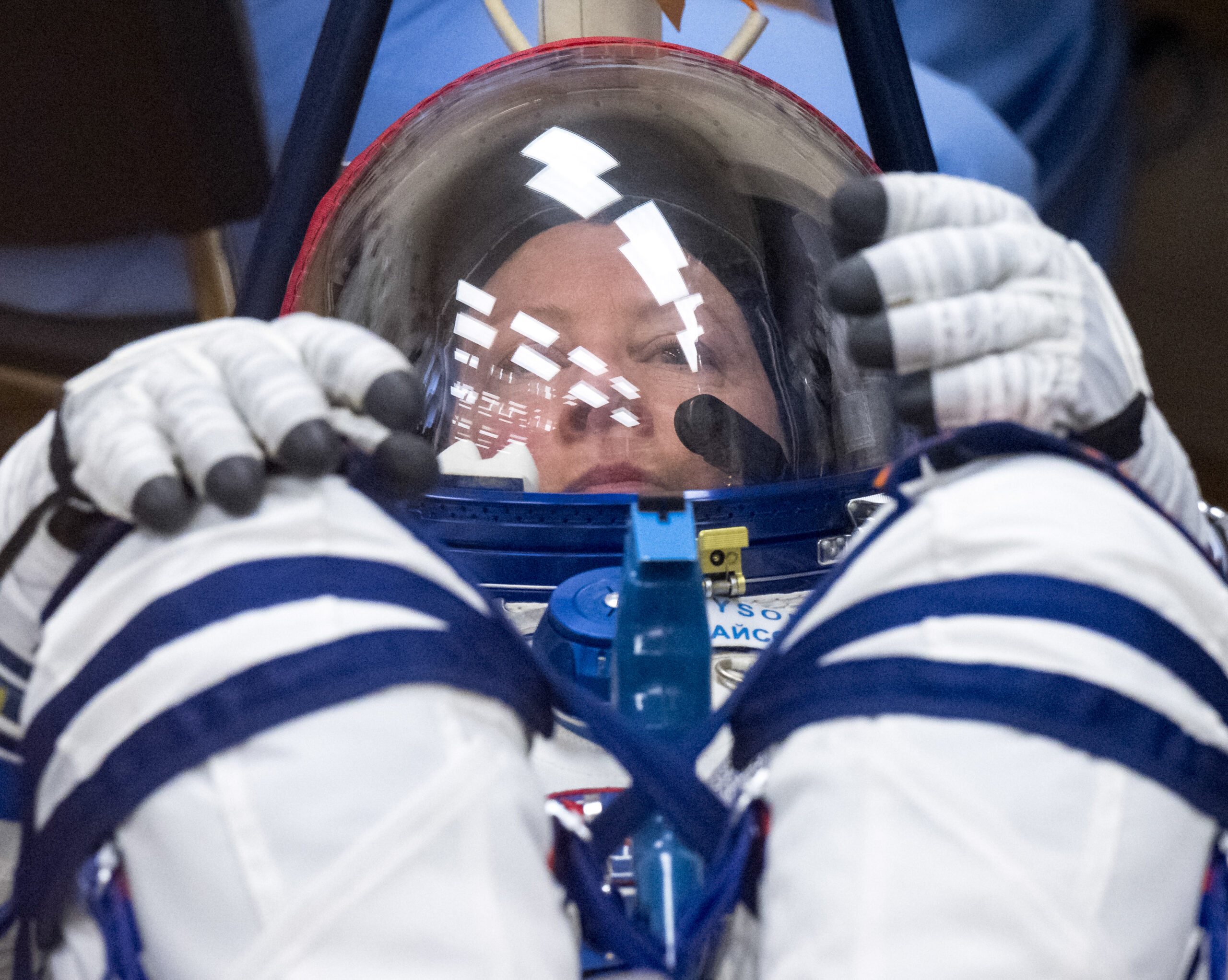
That gave the crew a last chance to speak (from behind glass screens) with friends and loved ones. They were then bussed out to Site 31/6 to board Soyuz MS-25, with Novitsky assuming the center commander’s seat in the tiny descent module, flanked by Vasilevskaya to his left and Dyson to his right.
In the final minutes of Thursday’s countdown, Russian music was piped into the Soyuz cabin for the crew’s benefit. At T-5 minutes, Novitsky’s controls were unlocked and internal avionics aboard the spacecraft were spooled-up for launch.
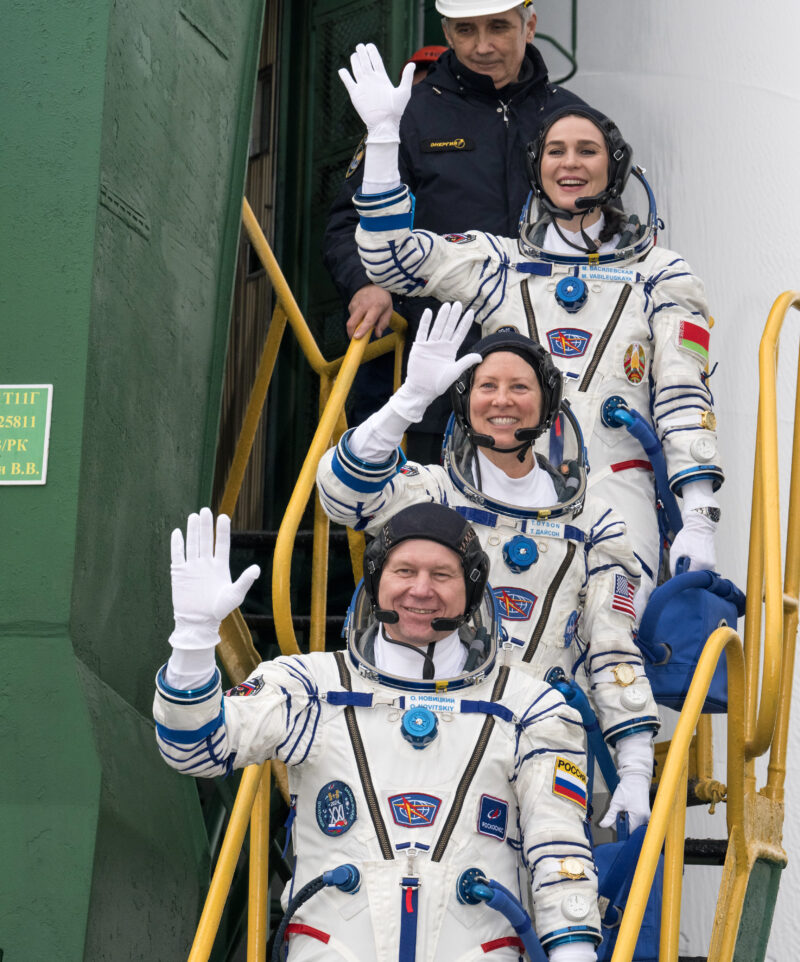
As the countdown entered the final minute, all eyes were focused on the launch pad’s two umbilical towers, both of which were set to retract and recline to their fallback positions in the final seconds before liftoff. “And that first umbilical tower now retracting,” reported NASA commentator Rob Navias in measured tones at T-30 seconds. “The second will retract at about the T-15 second mark, initiating engine sequence start.”
Passing T-20 seconds, and with the second umbilical tower yet to retract, the Russian launch announcer declared “Auto Sequence Initiated…command has been issued”, before a few moments of uneasy silence. Then, without warning, came the call: “Automatic abort of launch has gone through…Prepare to stand down for 24 hours.”
“And the launch has been aborted,” intoned Mr. Navias. “No launch!”
Fifteen minutes later, the twin gantry arms of Site 31/6’s were raised back from their fully reclined positions to a vertical configuration, enveloping the booster and facilitating the extraction of Novitsky, Dyson and Vasilevskaya. But in the hours that followed, there was little in the way of updates on when Soyuz MS-25 might next attempt to launch.
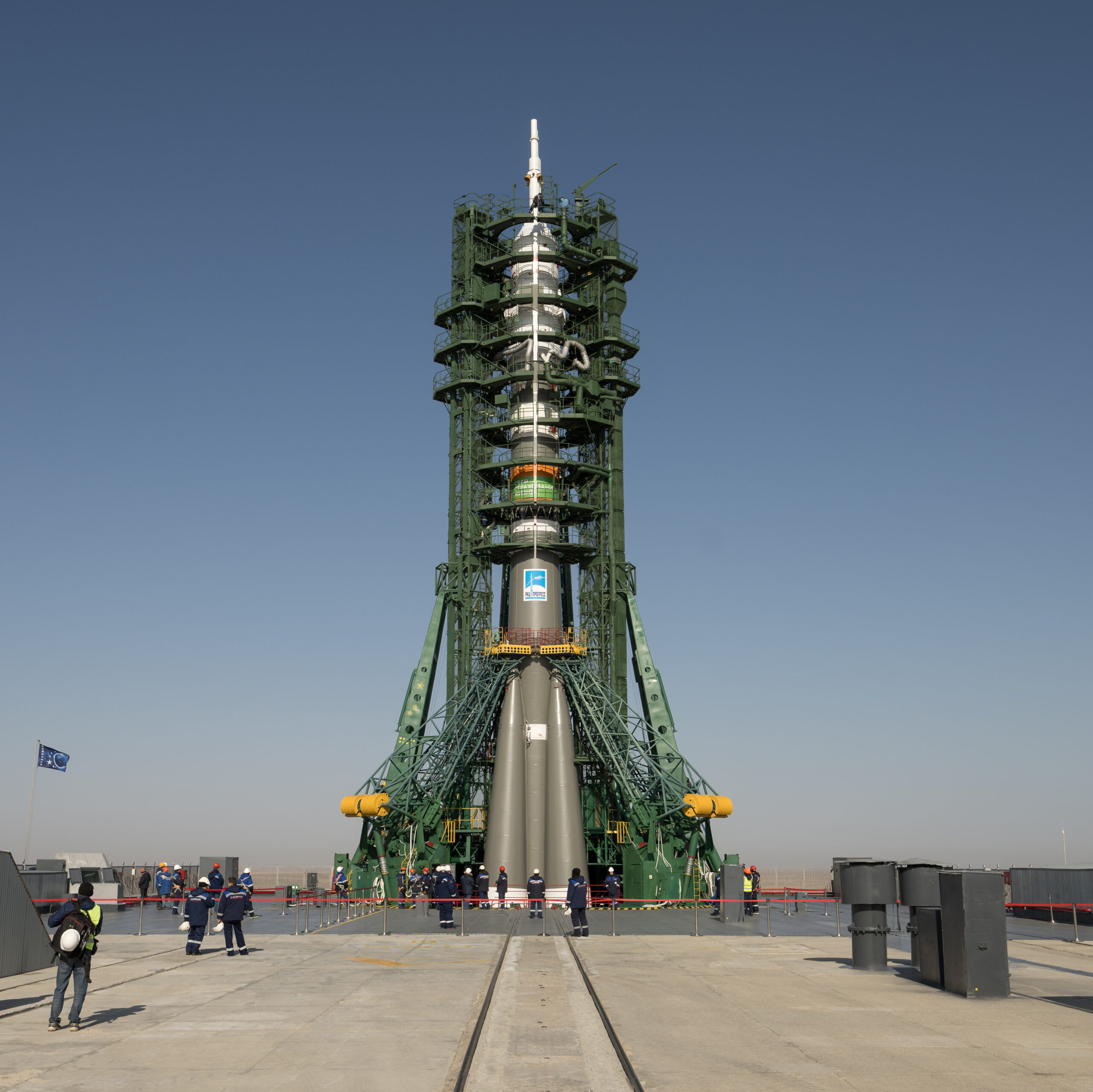
“The next available launch opportunity is Saturday, 23 March,” NASA reported in a blog post later on Thursday. “More information on the viability of that date is forthcoming, pending details on what caused today’s launch abort.”
With Soyuz MS-25 officially stood down, attention turned to SLC-40 at the Cape, where SpaceX’s veteran B1080 booster sat ready for her sixth launch in under a year. First launched on AxiomSpace, Inc.’s Ax-2 mission to the ISS in May of last year, she subsequently lifted two batches of Starlink internet communications satellites uphill, plus Europe’s Euclid deep-space observatory and most recently in January Dragon Freedom and Ax-3 crewmen Mike Lopez-Alegria, Walter Villadei, Marcus Wandt and Alper Gezeravcı, the latter of whom became the first national space traveler of Türkiye.
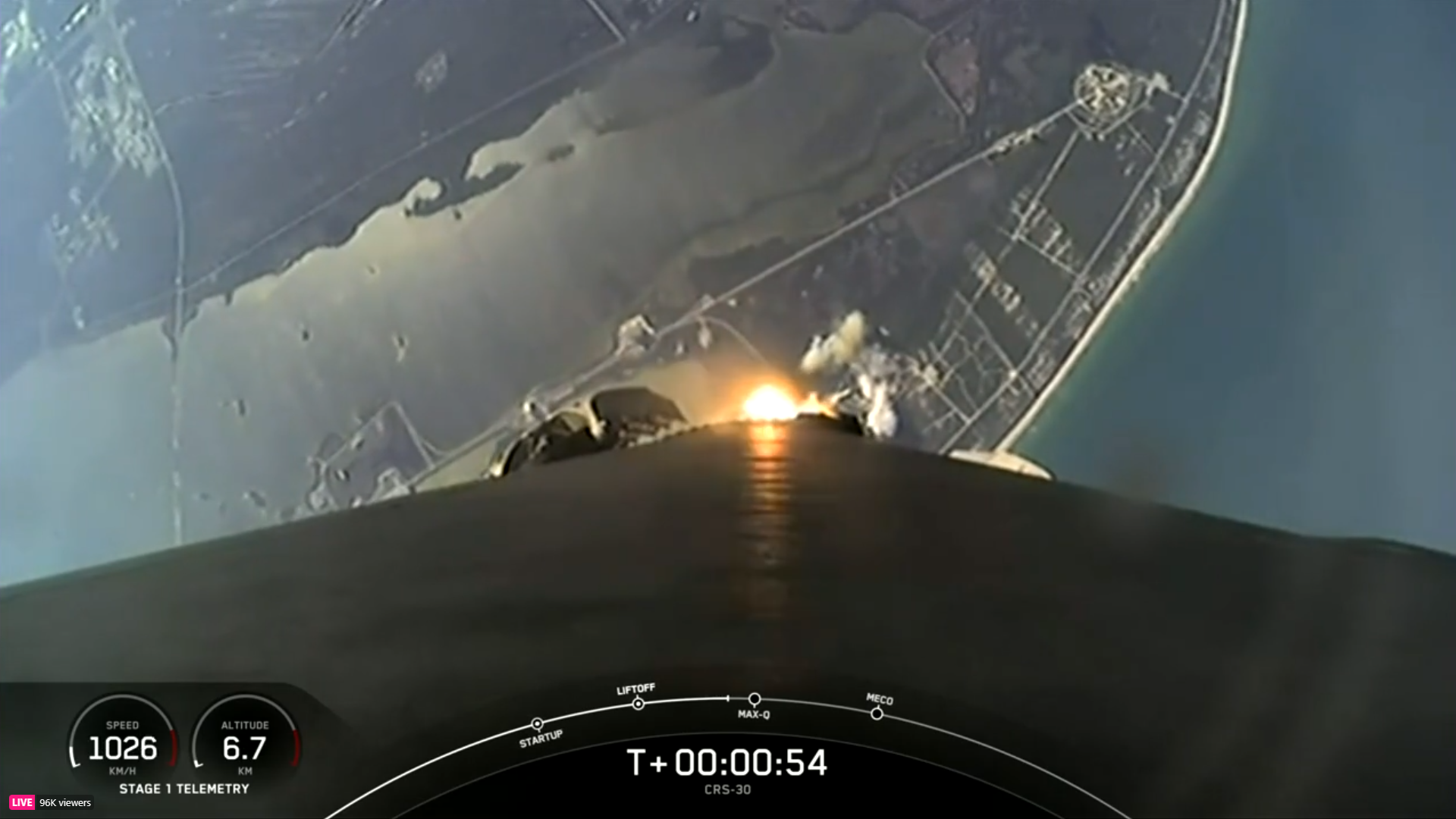
B1080, with a four-times-used Cargo Dragon perched at her tip, was elevated vertical on SLC-40 on Tuesday. It marked the first occasion since March 2020 that a Cargo Dragon will have flown from this particular launch pad—all recent missions were staged from historic Pad 39A at Florida’s Kennedy Space Center (KSC)—and the very first outing of SpaceX’s uprated Dragon-2 vehicle from SLC-40. However, SpaceX would not be drawn on questions of how soon Crew Dragon missions might begin flying from this pad.
With B1080 flying for the sixth time, the Cargo Dragon assigned to CRS-30 was making her own fourth flight to the space station, having supported a trio of month-long ISS research trips in summer 2021 and more recently over the Christmas/New Year period in December 2021-January 2022 and latterly in the spring of last year. Across those three missions, she logged over 102 cumulative days in space, transporting more than 20,200 pounds (9,100 kilograms) of cargo to the ISS and returning 14,500 pounds (6,600 kilograms) of research samples and unneeded hardware back to Earth.
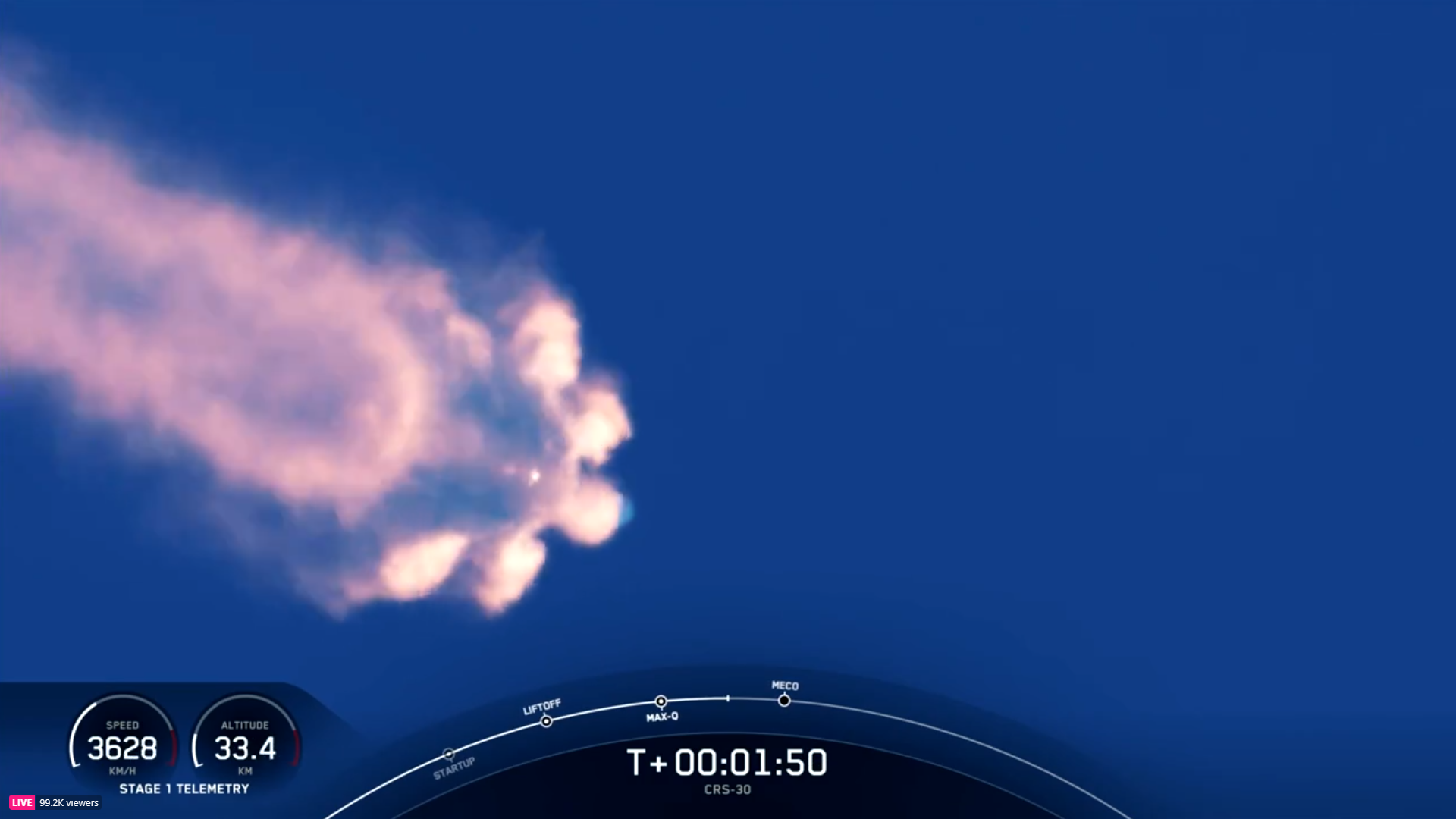
Payloads aboard CRS-30—flying under the second-round Commercial Resupply Services (CRS2) contract between NASA and SpaceX—include an experiment to investigate the carbon dioxide capturing mechanisms of two types of grasses to better understand changes in photosynthesis and plant metabolism in space, a multi-resolution scanner for the station’s on-board Astrobee robotic “helper” to support three-dimensional sensing, mapping and situational awareness functions and a deployable CubeSat to measure ocean ice levels and thickness. Also aboard is a replacement ISS pump module, with goodies for the Expedition 70 crew ranging from citrus fruit, apples, cherry tomatoes and two coffee kits.
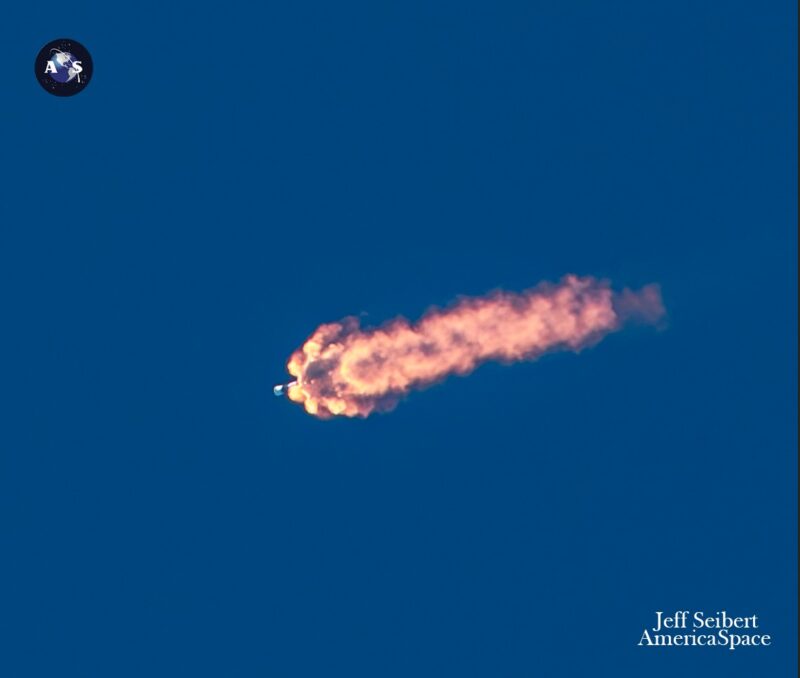
Weather conditions for Thursday’s 4:55 p.m. EDT launch were predicted to be about 90-percent-favorable, with a cool start to the day giving way to some moisture. “But conditions look optimistic from a Launch Commit Criteria (LCC) perspective as most of the rain and clouds hold off locally until the overnight hours,” stressed the 45th Weather Squadron at Patrick Space Force Base, and only a marginal concern of violating the Thick Cloud Layers Rule and Cumulus Cloud Rule.
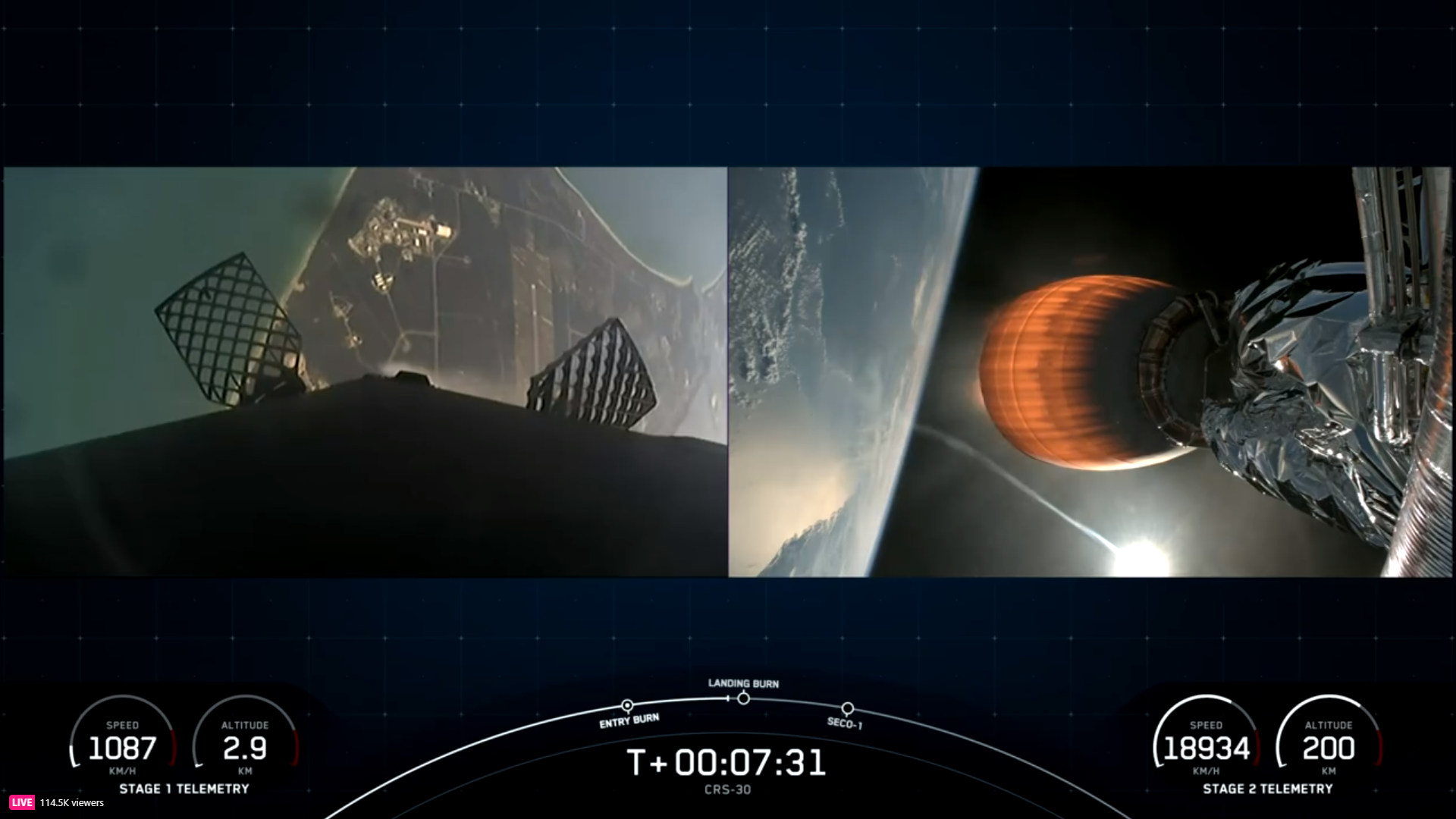
With weather expected to take a sharp turn for the worse by Friday’s 4:29 p.m. EDT backup opportunity, SpaceX teams pressed ahead to get their eighth Falcon 9 launch of March airborne on time. Liftoff occurred right on time and B1080 powered smoothly uphill into Florida’s gathering darkness, the brilliant exhaust of her nine Merlin 1D+ engines clearly visible late into first-stage ascent.
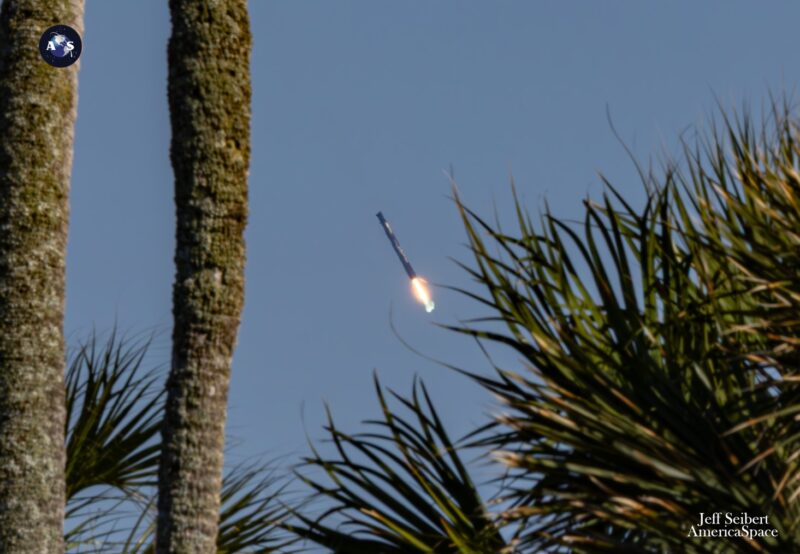
Two and a half minutes after leaving SLC-40, her job done, the core booster separated and returned to an on-point touchdown at Landing Zone (LZ)-1 at the Cape, marking the ninth Falcon 9 to alight on solid ground so far this year. Meanwhile, the Merlin 1D+ Vacuum engine of the second stage ignited for a six-minute “burn” to lift the Cargo Dragon the rest of the way into orbit, releasing CRS-30 into free flight just shy of 12 minutes after launch.
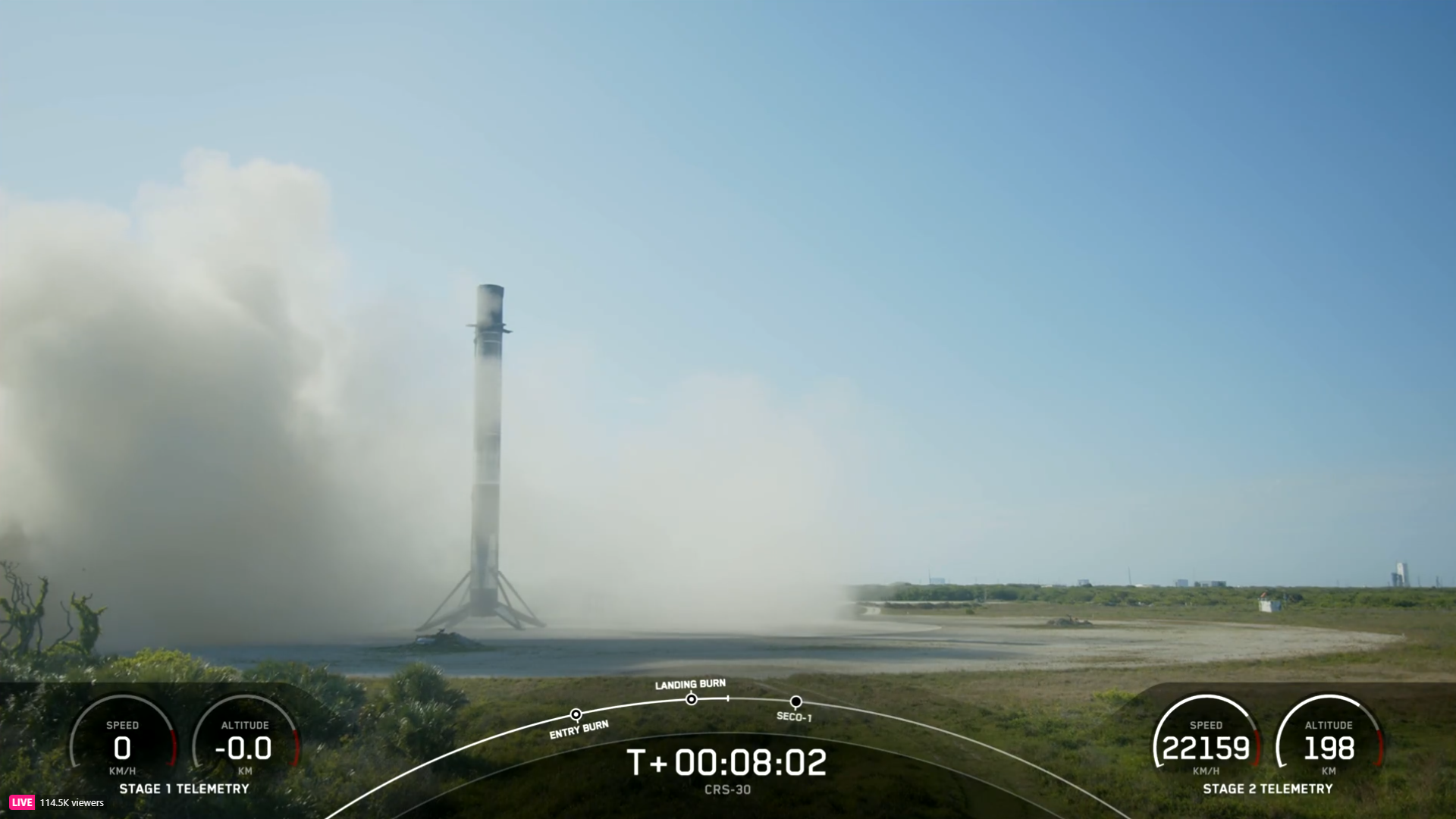
The cargo-laden vehicle is now in independent flight, tracking an autonomous rendezvous and docking at the forward port of the Harmony node at 7:30 a.m. EDT Saturday. Expedition 70 astronauts Matt Dominick and Mike Barratt will be on duty in the station’s multi-windowed cupola to monitor the cargo ship’s approach and current expectations are for CRS-30 to remain docked for about a month.




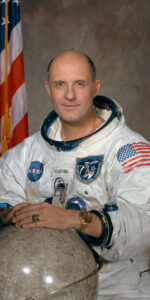
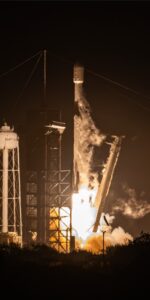
3 Comments
Leave a Reply3 Pings & Trackbacks
Pingback:Space Station Welcomes Cargo, Awaits Crew Arrival - AmericaSpace
Pingback:NASA’s Loral O’Hara to End 204-Day Mission, Return to Earth Tomorrow Night - AmericaSpace
Pingback:With Return of O’Hara, Crewmates, Expedition 71 Officially Underway - SPACERFIT